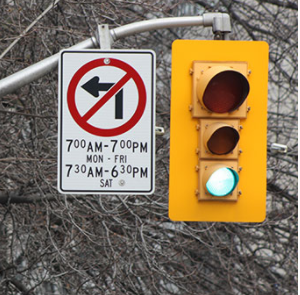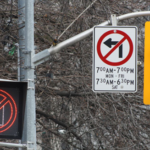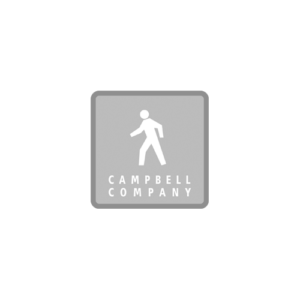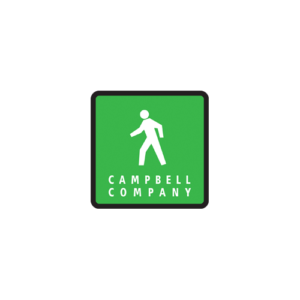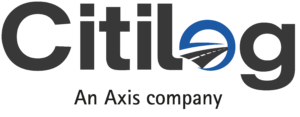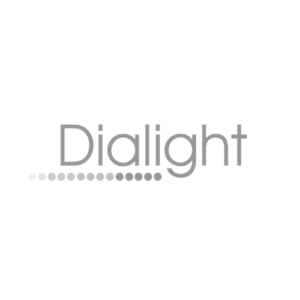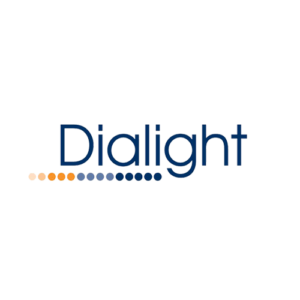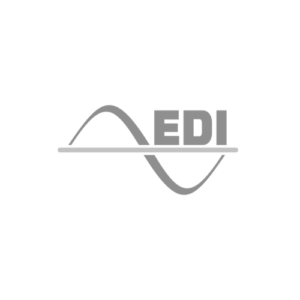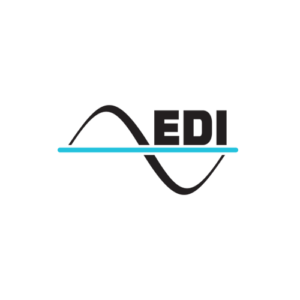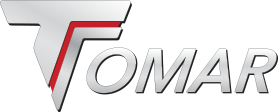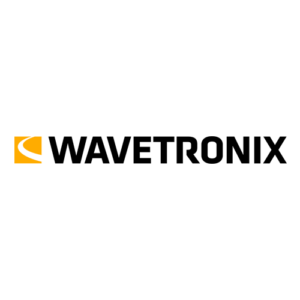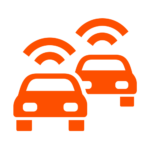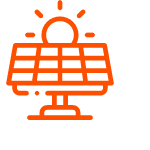Signage for no right/left turn in the city of Toronto
Most large urban centres use several signage tools to control road traffic, including static signs, cones and barriers. As shown in the image below, the City of Toronto controls traffic flow on several thoroughfares with static signs prohibiting drivers from turning right or left during high-traffic periods.
As traffic on the roads continues to increase, clear signage has become a considerable challenge in Toronto. Drivers, pedestrians and cyclists need to be extra vigilant to read and understand the many signs cropping up on the road network. The number of traffic violations for failing to obey signs keeps rising. Perhaps this is due to the increased number of construction projects, the aging of the population, the complexity of certain signs or changes to road regulations according to time of day. Whatever the cause, cities must find solutions to improve safety and traffic flow on the roads.
The solution proposed by Orange Traffic: LED traffic signs
Developed in Canada by Orange Traffic, the LED signs authorize or prohibit certain manoeuvres at intersections, including left or right turns. The messages on the signs can be changed according to the situation or time of day, thus optimizing traffic flow in a simple way that is clear for road users. Here is an example:
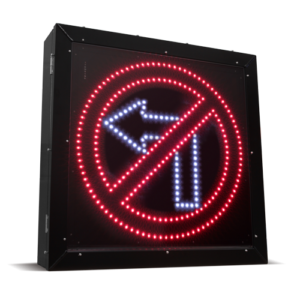
Pilot project in Toronto yields conclusive results*
A pilot project was launched to assess whether the solution met the City of Toronto’s needs. LED Blank-out traffic signs were installed at two busy intersections, next to the existing static signs. The objective was to evaluate the number of no-turn traffic violations before and after implementing Orange Traffic’s solution.
The results were highly convincing. With Blank-Out sign technology installed, the number of traffic violations fell on an average of 46% at the two intersections under study.
The City of Toronto, finding a solution that provided the intended results, has since installed the Blank-out sign solution at 14 other busy intersections in its downtown area.
The Orange Traffic solutions used in this project
In addition to providing its expertise and technical support, Orange Traffic contributed several of its products to the project:
- No Left Turn Blank-Out Signs,
- No Right Turn Blank-Out Signs,
- PEEK ATC-1000 Traffic Controllers, to configure and control the message displayed at given times of day,
- GPS SPC-22 Satellite Programmable Clock systems that use GPS technology to activate the signs based on time-of-day schedules where a traffic controller is not available,
- Pole-mounted cabinet housing the SPC-22 control system.
Benefits for the City of Toronto
The solutions presented in this case study offer the City several benefits:
- Greater visibility than static signage according to time of day scheduling,
- Over 46% fewer traffic violations for failure to obey traffic signs at intersections equipped with this solution,
- Enhanced visibility for commuters, bicycles and pedestrians,
- Improved and safer pedestrian flow when drivers are prohibited from turning,
- Better vehicle traffic flow due to reduced congestion.
For more information on Orange Traffic’s solutions, contact Daniel Lesage today. Our mission is to maximize road safety and traffic flow by developing technological innovations that meet cities’ specific needs.
*The study was conducted by the City of Toronto in 2014, at the intersection of King Street West and University Avenue, and at the intersection of King Street West and Spadina Avenue.
